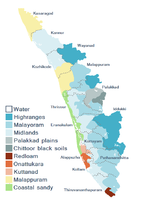
Photo from wikipedia
The coastal area holds great importance as it sustains a large number of people in addition to various bio-networks that have economic as well as biological significance. However, these may… Click to show full abstract
The coastal area holds great importance as it sustains a large number of people in addition to various bio-networks that have economic as well as biological significance. However, these may be prone to environmental calamities such as tsunamis. In the coastal areas of Pakistan, numerous earthquakes have been triggered by the tectonic movement under the Indian Ocean. Karachi and Gwadar cities being the economic hub of the country is at the potential risk of tsunamis; therefore, multi-criteria GIS mapping of tsunami susceptibility has been conducted in this paper for the Karachi to Gwadar, the coastal area of Pakistan. This study includes many geospatial variables such as coastal proximity and shape, topographic elevation and slope, and topography relative to the direction of the tsunami. Analytic hierarchy process (AHP) is exercised to develop an order of weights for each geospatial variable. For the potential tsunami risk, a land use map of coastal area of Pakistan is overlaid on the tsunami susceptibility map, and the final output map has shown that residential buildings, commercial complexes, and agricultural areas are vulnerable to destruction. Studies involving GIS are helpful in the evaluation of disaster, thereby aiding in the acceleration of local forecasting for the management of natural catastrophes like tsunamis. Tsunami susceptibility map presented in this paper seeks to support the evidence of the occurrence of the tsunami and the efforts directed towards the management of tsunami in the coastal areas of Pakistan.
Journal Title: Arabian Journal of Geosciences
Year Published: 2020
Link to full text (if available)
Share on Social Media: Sign Up to like & get
recommendations!